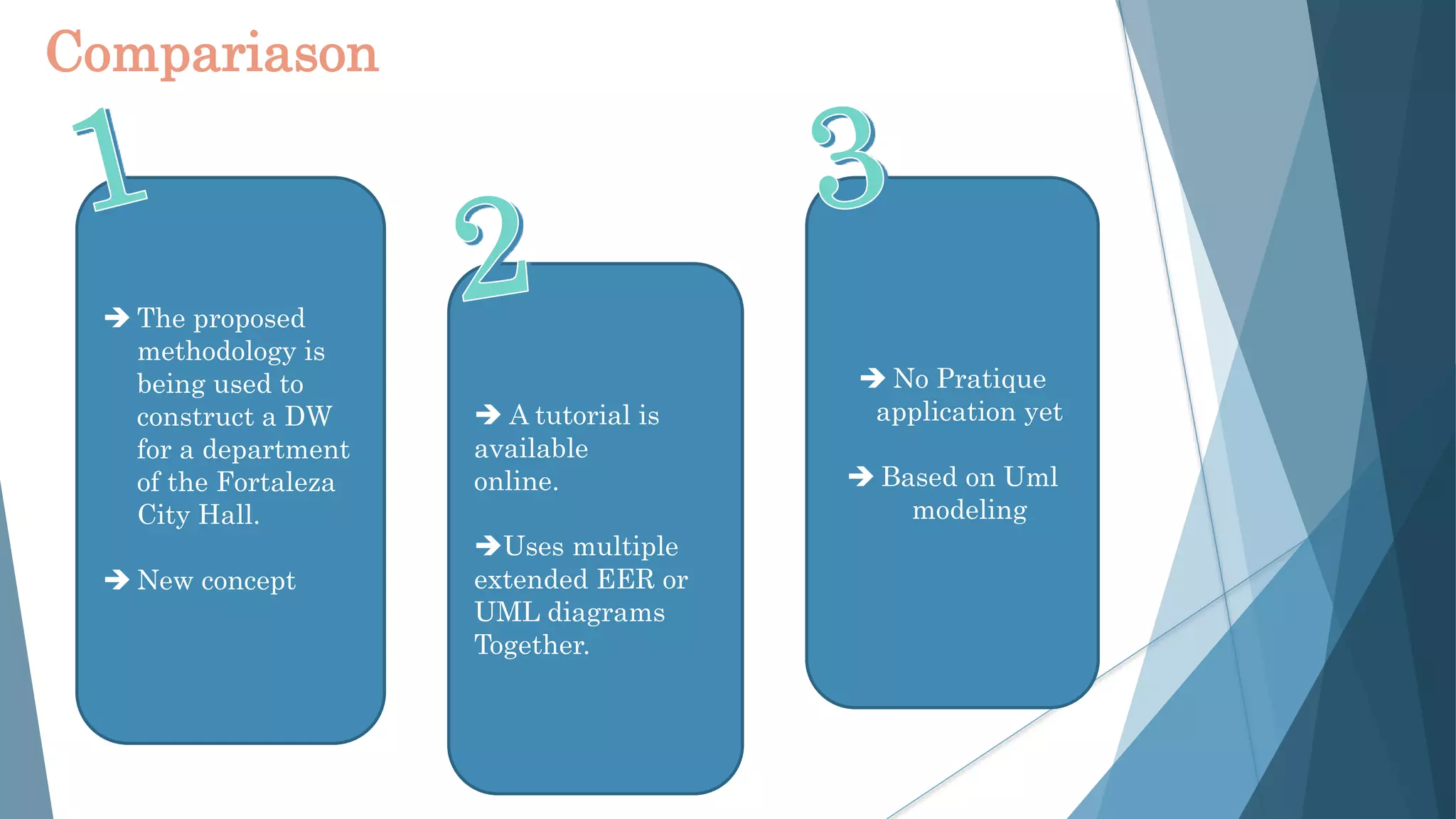The document discusses three papers related to data warehouse design.
Paper 1 presents the X-META methodology, which addresses developing a first data warehouse project and integrates metadata creation and management into the development process. It proposes starting with a pilot project and defines three iteration types.
Paper 2 proposes extending the ER conceptual data model to allow modeling of multi-dimensional aggregated entities. It includes entity types for basic dimensions, simple aggregations, and multi-dimensional aggregated entities.
Paper 3 presents a comprehensive UML-based method for designing all phases of a data warehouse, from source data to implementation. It defines four schemas - operational, conceptual, storage, and business - and the mappings between them. It also provides steps

































